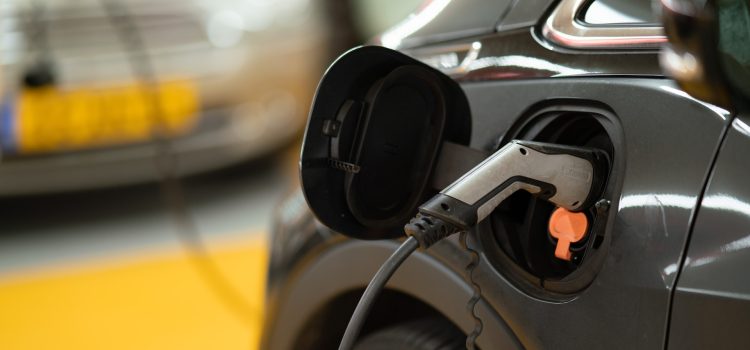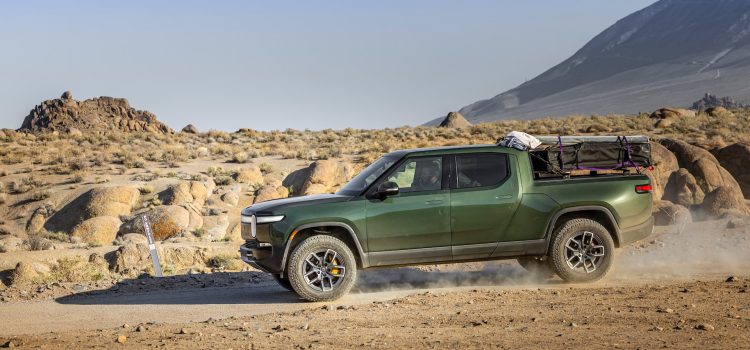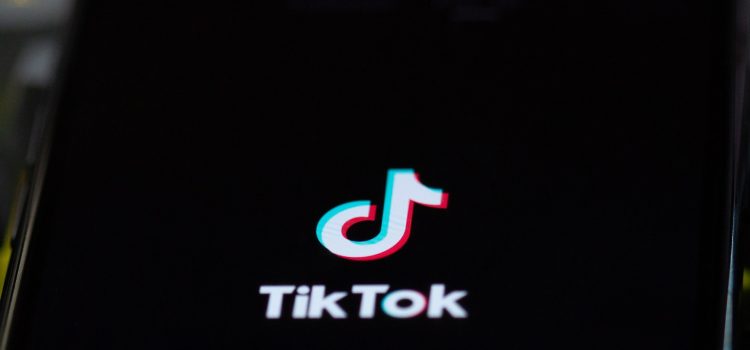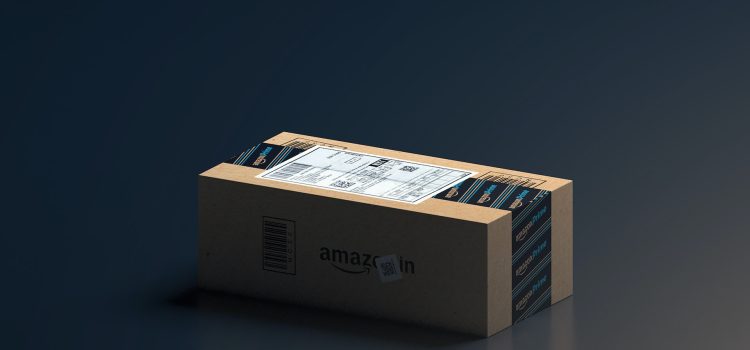


As Tesla’s highly anticipated Cybertruck continues to generate buzz and capture the imagination of automotive enthusiasts, one key element that has intrigued both critics and supporters alike is its robust rack system. In this report, we delve into the crucial role played by the rack in the Cybertruck’s journey, highlighting its practicality, versatility, and the impact it has on the overall design and functionality of this groundbreaking electric vehicle.
-
An Evolutionary Design:
a) Reinventing the Pickup Truck: Tesla’s Cybertruck represents a bold departure from traditional pickup truck design. Embracing a futuristic and angular aesthetic, the Cybertruck challenges the conventional notions of what a pickup should look like. At the heart of this design lies the rack system, which plays a pivotal role in reshaping the truck’s utility and enhancing its capabilities.
b) Form Meets Function: The rack system in the Cybertruck is not merely an accessory but a fundamental aspect of its design philosophy. By seamlessly integrating the rack into the vehicle’s structure, Tesla has created a harmonious blend of form and function, enabling users to fully leverage the Cybertruck’s utility and versatility.
-
Versatility Redefined:
a) Hauling Heavy Loads: The Cybertruck’s rack system has been engineered to handle heavy loads with ease. With its robust construction and advanced materials, it offers a reliable platform for transporting oversized cargo such as building materials, equipment, and even recreational vehicles. The adjustable tie-down points and customizable configuration provide flexibility, ensuring secure transportation regardless of the load’s size or shape.
b) Adventure and Exploration: Tesla recognizes the growing demand among outdoor enthusiasts for vehicles that can accommodate their gear and enable them to venture off the beaten path. The rack system in the Cybertruck caters to this audience, offering a convenient and secure solution for carrying adventure equipment such as bikes, surfboards, and camping gear. This versatility allows owners to seamlessly transition between their everyday commute and thrilling escapades.
-
Practicality and User Experience:
a) Accessibility and Convenience: Tesla has prioritized user experience in the design of the Cybertruck’s rack system. The adjustable configuration and easily accessible tie-down points make loading and unloading cargo a hassle-free experience. Furthermore, the rack’s design ensures that items are securely fastened, minimizing the risk of damage or loss during transportation.
b) Integration with Technology: As with all Tesla vehicles, the Cybertruck boasts an array of technological advancements. The rack system is likely to benefit from these innovations, potentially incorporating features such as built-in sensors to monitor the load’s weight distribution and real-time data on securing points, providing users with valuable information and peace of mind.
-
Environmental Considerations:
a) Sustainable Materials: Tesla’s commitment to sustainability extends to the design of the Cybertruck’s rack system. While specific details about the materials used in the rack are yet to be disclosed, it is expected that Tesla will prioritize environmentally friendly options, aligning with its overall vision of creating a sustainable transportation ecosystem.
b) Aerodynamics and Efficiency: The integration of the rack system into the Cybertruck’s design raises questions about its impact on aerodynamics and overall vehicle efficiency. Tesla’s engineers are likely to have conducted extensive testing and optimization to ensure that the rack’s presence does not compromise the vehicle’s range or energy efficiency, ultimately delivering a seamless driving experience.
Conclusion:
The rack system in Tesla’s Cybertruck represents a bold step forward in redefining the capabilities of pickup trucks. By seamlessly integrating utility and design, Tesla has created a vehicle that caters to a wide range of practical and adventurous.

The rapid growth of electric vehicles (EVs) has sparked a global conversation about sustainable transportation and reducing carbon emissions. While EVs offer significant environmental benefits, their overall impact varies across regions due to locational factors. This report delves into the locational factors that shape the environmental impact of electric vehicles and explores the clean car dilemma faced by different areas.
-
The Rise of Electric Vehicles and Their Environmental Promise:
As concerns over climate change intensify, the automotive industry has embraced electric vehicles as a means to combat carbon emissions. The environmental benefits of electric cars are well-documented and include:
a) Zero Tailpipe Emissions: Unlike conventional internal combustion engine vehicles, electric cars produce zero tailpipe emissions. This helps mitigate air pollution and reduce greenhouse gas emissions, contributing to improved air quality and climate change mitigation.
b) Renewable Energy Integration: Electric vehicles provide an opportunity to integrate renewable energy sources into the transportation sector. By charging EVs with clean energy, such as solar or wind power, the environmental impact can be further reduced, creating a synergy between sustainable transportation and renewable energy generation.
-
Locational Factors Shaping Environmental Impact:
a) Electricity Generation Mix: The environmental impact of electric vehicles is heavily influenced by the electricity generation mix in a given region. Areas with a higher proportion of renewable energy sources, such as hydroelectric, wind, or solar power, offer cleaner electricity for charging EVs. In contrast, regions heavily reliant on fossil fuel-based electricity generation may have a higher carbon footprint associated with charging electric cars.
b) Charging Infrastructure Development: The availability and accessibility of charging infrastructure play a crucial role in the widespread adoption of electric vehicles. Well-developed charging networks, including fast-charging stations and a variety of charging options, promote the convenience and practicality of electric cars. The presence of a robust charging infrastructure encourages more individuals to transition to electric mobility and reduces reliance on traditional gasoline-powered vehicles.
c) Urban Density and Transportation Patterns: The locational factors of urban density and transportation patterns also impact the environmental footprint of electric vehicles. Compact and highly populated urban areas with shorter commuting distances and well-connected public transportation systems are more conducive to electric car adoption. The lower mileage requirements and reduced dependency on personal vehicles contribute to a smaller environmental impact.
-
Case Studies: Examining Locational Influences on Environmental Impact:
To gain insights into the locational factors shaping the environmental impact of electric vehicles, let’s explore a few case studies:
a) Nordic Countries: Nordic countries, such as Norway and Sweden, have emerged as leaders in electric vehicle adoption. Their commitment to renewable energy, coupled with strong government incentives and infrastructure development, has created a favorable environment for electric car owners. The combination of clean electricity and robust charging infrastructure contributes to a lower environmental impact of EVs in these regions.
b) United States: The environmental impact of electric vehicles in the United States varies across states due to regional differences in electricity generation and charging infrastructure. States with a higher share of renewable energy sources, such as California and New York, have a cleaner charging grid and, consequently, a lower carbon footprint associated with EVs.
c) Developing Countries: In developing countries, where electricity generation relies heavily on coal or other fossil fuels, the environmental benefits of electric vehicles may be diminished. However, it is important to note that even in these regions, the long-term environmental impact can be mitigated by transitioning to cleaner energy sources for electricity generation.

UVeye, an Israeli-based startup specializing in AI-powered automotive inspection technology, has recently made waves in the industry by securing an impressive $100 million in funding. This significant investment will propel the development and deployment of UVeye’s advanced system, which utilizes artificial intelligence and high-resolution imaging to detect various car problems. In this report, we explore the implications of UVeye’s latest funding round and how its AI-powered car problem detection technology is driving safety forward and transforming the automotive industry.
-
A Closer Look at UVeye’s Innovative Technology:
UVeye’s state-of-the-art inspection technology combines computer vision, deep learning algorithms, and high-resolution imaging to capture and analyze detailed visual data of vehicles. By leveraging AI capabilities, the system can accurately detect a wide range of car problems, including tire issues, brake malfunctions, and mechanical defects. This technology represents a significant leap forward in the field of automotive inspection, promising enhanced safety and improved maintenance practices.
-
Enhancing Road Safety through Car Problem Detection:
Identifying and addressing car problems promptly is crucial for ensuring road safety. Traditional inspection methods often rely on manual checks or basic diagnostics, which may overlook hidden or subtle issues. UVeye’s AI-powered system, on the other hand, provides a comprehensive and accurate assessment of a vehicle’s condition, including its mechanical components. By detecting problems that could compromise safety, such as tire pressure abnormalities or worn-out brake pads, UVeye’s technology helps prevent accidents and potential breakdowns.
-
The Significance of UVeye’s $100M Funding Round:
The recent $100 million funding round signifies a major milestone for UVeye and underscores the increasing recognition of the importance of AI-powered car problem detection. This substantial investment will enable UVeye to accelerate its research and development efforts, expand its global reach, and strengthen its position as a key player in the automotive inspection industry. The funding not only validates the potential of UVeye’s technology but also demonstrates investors’ confidence in the company’s vision and capabilities.
-
Advancements in Tire Problem Detection:
One area where UVeye’s technology stands out is its ability to detect tire issues accurately. Tire-related problems, such as improper pressure or worn-out treads, can significantly impact vehicle safety and fuel efficiency. UVeye’s AI algorithms analyze visual data to identify underinflated or overinflated tires, as well as worn-out treads, allowing for early detection and prompt resolution of these issues. This capability not only enhances safety on the road but also helps drivers optimize their vehicle’s performance and reduce maintenance costs.
-
Streamlining Vehicle Maintenance Processes:
Beyond its impact on driving safety, UVeye’s technology also streamlines vehicle maintenance processes for various industry stakeholders. Dealerships, service centers, and fleet operators can leverage the system’s automated inspection capabilities to conduct efficient and comprehensive assessments of vehicles. By automating the inspection process, UVeye minimizes human error, reduces inspection time, and enables timely identification and resolution of maintenance issues. This streamlined approach translates into improved operational productivity, reduced downtime, and cost savings.
-
Implications for Vehicle Manufacturers:
UVeye’s AI-powered inspection technology has significant implications for vehicle manufacturers as well. By integrating UVeye’s system into their production lines, manufacturers can conduct automated inspections during the assembly process, ensuring that vehicles meet stringent quality standards before reaching the market. This proactive approach to quality control reduces the likelihood of manufacturing defects, minimizes recalls, and enhances the overall reliability of vehicles, leading to increased customer satisfaction.

The world of artificial intelligence (AI) is undergoing a seismic shift as the CEO of OpenAI, a prominent AI research organization, takes the stand before a congressional inquiry. This momentous event not only reflects the growing concerns surrounding the ethical implications of AI but also underscores the increasing influence and reach of OpenAI in shaping the future of AI development. In this report, we delve into the background of OpenAI, the pressing questions posed by lawmakers, and the broader implications for the AI industry and society as a whole.
-
OpenAI: Pioneering AI Research and Development
OpenAI, founded in 2015 by visionaries including Elon Musk and Sam Altman, has emerged as a leading force in the field of AI research. The organization’s mission is to ensure that artificial general intelligence (AGI) benefits all of humanity while mitigating potential risks. With its commitment to groundbreaking research, OpenAI has made significant strides in pushing the boundaries of AI technology.
-
Congressional Inquiry: The Need for AI Ethics and Oversight
The decision to summon OpenAI’s CEO to testify before Congress reflects the increasing recognition among policymakers that AI technology requires ethical guidelines and regulatory oversight. The rapid advancement of AI has sparked concerns about privacy, algorithmic bias, job displacement, and the potential for unintended consequences. The congressional inquiry seeks to address these concerns and explore potential avenues for the responsible development and deployment of AI.
-
The Ethical Dimensions of AI: A Focal Point of Inquiry
The heart of the congressional inquiry lies in the exploration of the ethical dimensions of AI. Lawmakers are keen to understand OpenAI’s approach to ensuring fairness, transparency, and accountability in AI algorithms and decision-making processes. Questions are likely to arise regarding potential biases, algorithmic accountability, and the responsible use of AI technology. OpenAI’s CEO will be at the forefront of discussing these critical issues and articulating the organization’s ethical stance.
-
Responsible AI Development: Balancing Innovation and Societal Impact
As AI technology continues to evolve, striking a delicate balance between innovation and societal impact becomes imperative. OpenAI’s CEO will face questions regarding how the organization intends to navigate this balance, addressing concerns about the potential misuse of AI, algorithmic transparency, and the responsible handling of sensitive data. This pivotal discussion will shed light on OpenAI’s commitment to upholding ethical standards and ensuring the public’s trust in AI systems.
-
Collaborative Approach: OpenAI’s Impact on AI Research
OpenAI has distinguished itself through its collaborative approach to AI research. The organization has actively fostered partnerships with academic institutions and has been a proponent of sharing research findings with the broader scientific community. However, this collaborative model may face scrutiny during the congressional inquiry, with lawmakers questioning the potential risks associated with the dissemination of advanced AI technologies and the need for increased regulatory oversight.
-
Implications for AI Policy and Regulation
The OpenAI CEO’s testimony carries significant implications for the future of AI policy and regulation. Congress will likely consider the need for legislation that addresses ethical guidelines, data privacy, algorithmic transparency, and the establishment of regulatory frameworks for AI development and deployment. OpenAI’s insights and recommendations will play a crucial role in shaping the direction of future AI policies, striking a balance between innovation and societal well-being.
-
Public Perception: Fostering Trust and Accountability
The congressional inquiry presents an opportunity for OpenAI to showcase its commitment to fostering trust and accountability in the AI industry. Transparent communication and proactive measures to address ethical concerns will be pivotal in shaping public perception.

TikTok, the global phenomenon that has captivated millions with its short-form videos, has set its sights on the e-commerce market with the introduction of the TikTok Shop. This strategic move aims to capitalize on TikTok’s massive user base and transform it into an active consumer marketplace. However, recent reports indicate a delay in the full opening of the TikTok Shop in the United States, leaving shoppers eagerly anticipating its arrival. In this report, we will explore the implications of TikTok’s e-commerce expansion, delve into the anticipation among users, and investigate the factors contributing to the delay.
-
TikTok’s Evolution into E-commerce
TikTok’s venture into e-commerce represents a natural progression for the platform, given its widespread popularity and influence. By introducing the TikTok Shop, TikTok aims to seamlessly merge content consumption and online shopping, creating a unique and engaging user experience. This move not only opens up new revenue streams for TikTok but also aligns with the growing trend of social commerce, where users discover and purchase products through their favorite social media platforms.
-
Understanding the Delay: Factors at Play
While TikTok has not provided explicit details about the delay in the full opening of the TikTok Shop in the United States, several factors likely contribute to this decision. Technical challenges, ensuring regulatory compliance, and refining the shopping experience are among the key considerations TikTok must address to deliver a seamless and secure e-commerce platform. By prioritizing these aspects, TikTok demonstrates its commitment to providing a reliable and user-friendly shopping environment.
-
Anticipation and Excitement Among Shoppers
TikTok’s extensive user base eagerly awaits the full opening of the TikTok Shop, driven by the anticipation of discovering unique products and engaging in an immersive shopping experience. The platform’s algorithm-driven content recommendation system holds the promise of personalized product suggestions, enabling users to explore a curated selection of items tailored to their interests. Shoppers anticipate exclusive deals, limited-edition merchandise, and innovative shopping features that align with TikTok’s vibrant and interactive nature.
-
Bridging the Gap Between Content and Commerce
The TikTok Shop blurs the boundaries between content creation and consumerism, forging a new frontier in the realm of social commerce. By seamlessly integrating shopping within the platform, TikTok creates a symbiotic relationship between creators, brands, and users, where content inspires purchases and purchases fuel content creation. This convergence of content and commerce has the potential to reshape consumer behavior and revolutionize the way brands engage with their target audience.
-
Opportunities and Challenges for Brands
The TikTok Shop presents a plethora of opportunities for brands looking to tap into TikTok’s vast user base and capture the attention of a highly engaged audience. Emerging brands, in particular, can leverage the platform’s emphasis on authenticity and creativity to connect with their target market in innovative ways. However, with increased competition for attention, brands must develop compelling content strategies that resonate with TikTok’s diverse and discerning audience. Building authentic connections and fostering brand loyalty will be crucial for long-term success.
-
Privacy and Trust: Building a Secure Shopping Environment
As TikTok expands into e-commerce, it must prioritize privacy and trust to ensure the loyalty of its user base. Transparent data practices, robust security measures, and compliance with privacy regulations are essential in establishing a trustworthy shopping environment. By safeguarding user data and providing clear information about privacy policies, TikTok can foster trust and reassure shoppers that their information is secure.

In a bid to diversify its online retail empire, Amazon has announced a significant expansion into the gaming and mobile app market. This move represents a strategic step towards capturing a larger share of the lucrative digital entertainment industry and further establishing Amazon as a dominant player in the global marketplace. In this report, we will delve into the details of Amazon’s expansion, examine its potential impact on the gaming and app industry, and analyze the implications for both consumers and competitors.
-
Amazon’s Gaming Ambitions: Tapping into a Booming Market
The gaming industry has witnessed exponential growth in recent years, fueled by the increasing popularity of mobile gaming and the rise of online multiplayer experiences. Amazon recognizes the immense potential of this market and aims to leverage its existing infrastructure and customer base to establish a strong foothold in the gaming industry. By expanding its online store to include gaming and mobile apps, Amazon is poised to compete with established players such as Google Play and Apple’s App Store.
-
The Power of Amazon’s Ecosystem: Seamless Integration and Convenience
One of Amazon’s key advantages lies in its extensive ecosystem, encompassing various services such as Amazon Prime, Twitch, and Amazon Web Services (AWS). By integrating its gaming and app offerings within this ecosystem, Amazon can provide users with a seamless and convenient experience. This integration may include benefits such as cross-platform compatibility, exclusive discounts for Prime members, and enhanced gaming experiences through AWS technology.
-
The Developer Perspective: Opportunities and Challenges
Amazon’s expansion into gaming and mobile apps presents both opportunities and challenges for developers. On one hand, it offers a new distribution channel with access to Amazon’s massive customer base and infrastructure. This can potentially result in increased exposure and revenue opportunities. However, developers must also consider factors such as revenue sharing models, discoverability within Amazon’s vast digital store, and the competitive landscape in the gaming and app market.
-
Disruption in the Digital Marketplace: Competitive Landscape and Consumer Impact
Amazon’s entry into the gaming and app market disrupts the existing dynamics and challenges established players. With its vast resources, strong brand recognition, and customer-centric approach, Amazon has the potential to reshape the competitive landscape. This expansion also benefits consumers by providing them with more choices, competitive pricing, and potentially improved customer support. However, it also raises questions about potential monopolistic practices and the concentration of power within the digital marketplace.
-
Consumer Trust and Data Privacy: Addressing Concerns
As Amazon expands its presence in the gaming and app industry, concerns surrounding consumer trust and data privacy come to the forefront. With access to vast amounts of customer data, Amazon must ensure robust security measures and transparent data handling practices. Maintaining consumer trust will be crucial in the success of its gaming and app store expansion, as users expect their personal information to be safeguarded and their privacy respected.
-
The Future of Amazon’s Gaming and App Store: Opportunities and Challenges
The success of Amazon’s gaming and app store expansion hinges on its ability to attract both developers and consumers. Amazon must actively court developers with attractive revenue sharing models, comprehensive developer support, and effective marketing strategies. Additionally, it must continually innovate to provide a compelling user experience, curated content, and value-added services to consumers. Staying ahead of the competition and adapting to evolving consumer preferences will be key challenges for Amazon in the years to come.
Conclusion:
Amazon’s expansion into the gaming and mobile app market signifies a strategic move to diversify its online retail empire. By leveraging its existing ecosystem and infrastructure, Amazon aims to capture a significant share of the rapidly growing gaming and app industry.

The pervasive threat of spyware misuse has prompted European Union (EU) lawmakers to advocate for a sales ban, aiming to address the alleged abuses and protect individuals’ privacy rights. The revelations of unauthorized surveillance and the potential for significant violations of civil liberties have galvanized EU lawmakers into urgent action. In this report, we will delve into the details surrounding the alleged abuses of spyware, explore the motivations behind the EU’s push for a sales ban, and examine the potential implications of such a ban on surveillance technology.
-
Spyware’s Shadowy Landscape: Balancing Security and Privacy
Spyware, a powerful surveillance technology, was initially developed to assist law enforcement and intelligence agencies in combating criminal activities and ensuring national security. However, the unregulated proliferation of spyware has raised serious concerns regarding its potential for abuse, undermining the delicate balance between security and privacy.
-
Unmasking Alleged Spyware Abuses: A Disturbing Reality
Recent revelations have exposed the dark underbelly of the spyware industry, with reports surfacing about alleged abuses and unwarranted intrusions into individuals’ lives. It is alleged that certain companies have facilitated the deployment of spyware for unauthorized surveillance, targeting journalists, human rights activists, and political dissidents. These disturbing practices have highlighted the need for robust regulation to prevent the misuse of spyware technology.
-
Privacy and Civil Liberties at Stake: The Urgency for Action
The alleged abuses of spyware pose a direct threat to individuals’ privacy and civil liberties, compromising the functioning of democratic societies. By infiltrating personal devices and clandestinely collecting sensitive data, unauthorized surveillance infringes upon the fundamental rights of individuals, stifling freedom of expression and undermining the trust necessary for open societies.
-
EU Lawmakers Take a Stand: Advocating for a Sales Ban
In response to the grave concerns surrounding spyware misuse, EU lawmakers are taking decisive action by pushing for a sales ban on surveillance technologies that could potentially be exploited for unauthorized surveillance purposes. The proposed ban seeks to curtail the proliferation of spyware and establish clear boundaries for its usage, with the ultimate goal of safeguarding individuals’ privacy rights.
EU lawmakers argue that a sales ban is a necessary step to prevent the dissemination of spyware by unauthorized actors and to ensure that surveillance technologies are used exclusively for legitimate purposes in adherence to human rights standards. This proactive approach aims to protect individuals from unwarranted intrusions into their private lives.
-
Balancing Security and Regulation: Challenges Ahead
While the push for a sales ban reflects the urgency to address the alleged abuses of spyware, implementing effective regulation poses significant challenges. Striking the right balance between security needs and privacy protection requires careful consideration and collaboration between policymakers, industry experts, and civil society organizations.
Technical complexities, including encryption and anonymization technologies, make the regulation of spyware a formidable task. Policymakers must navigate these complexities while also addressing the legitimate needs of law enforcement and intelligence agencies to combat criminal activities and protect national security.
-
International Cooperation: A Global Effort
The issue of spyware misuse extends beyond national borders, necessitating international cooperation to combat the challenges posed by surveillance technology. While the EU takes the lead in advocating for a sales ban, fostering collaboration with global partners becomes crucial to establishing comprehensive regulations and addressing the transnational nature of spyware abuse.
International cooperation can facilitate the exchange of information, best practices, and expertise, enabling countries to align their efforts in combating the misuse of surveillance technologies.

The world of social media was thrown into chaos when a high-profile Twitter hack unfolded, resulting in the takeover of celebrity accounts and the promotion of fraudulent schemes. Now, a breakthrough has emerged as a British individual has come forward and confessed to orchestrating the cyberattack that targeted prominent figures on the platform. This shocking revelation not only exposes the vulnerabilities within social media platforms but also raises concerns about the privacy and security of celebrities. In this comprehensive report, we will delve into the intricate details of the Twitter hack, explore the implications for celebrity privacy, and discuss the urgent need for enhanced online security measures.
-
The Twitter Hack: A Nightmarish Scenario
In a brazen cyberattack that shook the online world, high-profile Twitter accounts, including those belonging to celebrities, politicians, and business leaders, were compromised in a sophisticated hack. The attackers utilized these accounts to propagate a Bitcoin scam, manipulating the trust and influence associated with the targeted individuals. This audacious breach exposed the vulnerabilities of the platform, leading to an immediate investigation into the incident.
-
Unmasking the Culprit: A Briton’s Confession
After months of relentless pursuit, law enforcement agencies and cybersecurity experts made a significant breakthrough. A British individual, whose identity is being withheld due to ongoing legal proceedings, has come forward and confessed to orchestrating the Twitter hack. This admission provides crucial insights into the methods employed by the hackers and sheds light on the motivations behind the attack.
The confession revealed that the breach was executed through a meticulously planned social engineering scheme. By exploiting the trust of Twitter employees, the hackers gained unauthorized access to the platform’s administrative tools, enabling them to compromise the high-profile accounts. The confession not only exposed the technical details of the hack but also raised questions about the efficacy of security protocols within social media platforms.
-
Celebrity Privacy in Jeopardy: Implications of the Twitter Hack
The Twitter hack has far-reaching implications for the privacy and security of celebrities. The breach revealed the extent to which malicious actors can infiltrate and manipulate online platforms to target high-profile individuals. For celebrities, whose lives are often lived in the public eye, the hack exposed their vulnerability to social engineering tactics and highlighted the importance of robust security measures to protect their personal information.
The compromising of celebrity accounts can have severe consequences, ranging from reputational damage to financial loss. The Twitter hack serves as a stark reminder that even those with substantial followings and significant influence are not immune to cybersecurity threats. The incident calls for heightened awareness and proactive measures to safeguard the privacy and security of celebrities in the digital age.
-
Strengthening Online Security: A Pressing Need
In the aftermath of the Twitter hack, the urgency to bolster online security measures has become undeniable. Social media platforms, including Twitter, must invest in advanced technologies and stringent protocols to protect their users, particularly high-profile individuals. This includes implementing robust authentication mechanisms, improving employee training on cybersecurity, and enhancing incident response protocols to minimize the impact of potential breaches.
Additionally, the Twitter hack underscores the importance of user awareness and education regarding online security. Users, including celebrities, must be vigilant and adopt best practices, such as strong passwords, two-factor authentication, and cautious engagement with suspicious links or messages. Collaborative efforts between platforms, users, and cybersecurity experts are crucial to creating a more secure digital landscape.
-
A Call for Regulation: Safeguarding Privacy and Mitigating Risks
The Twitter hack has ignited discussions about the need for stronger regulations to safeguard privacy and mitigate cybersecurity risks.







